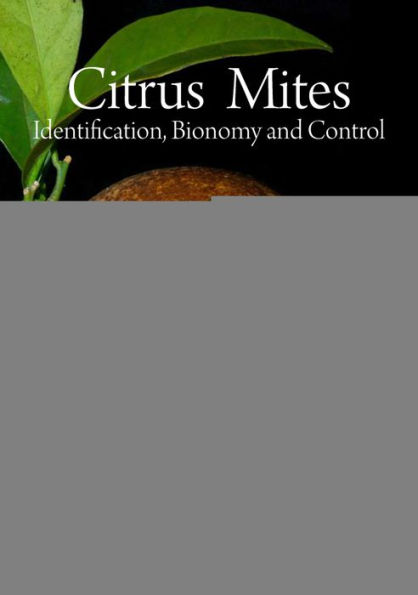Table of Contents
Preface x
Acknowledgements xiv
Part I Introduction
1 Citriculture and Injurious Mites 3
1.1 Introduction 3
1.2 Citriculture 3
1.2.1 Species and varieties cultivated 4
1.2.2 World production 7
1.2.3 Fruit exports 7
1.2.4 Juice production 8
1.3 Citrus Mites and Their Economic Importance 9
2 Introduction to Acari 11
2.1 Introduction 11
2.2 Morphology and Structure 11
2.2.1 Body division and external morphology 11
2.2.2 Gnathosoma 14
2.2.3 Idiosoma 16
2.2.4 Legs 16
2.3 Classification 17
2.3.1 Higher classification 17
2.3.2 Suborder Prostigmata 19
3 Methods and Techniques 20
3.1 Collecting 20
3.1.1 Collecting from plants 20
3.1.2 Collecting in substrate 21
3.2 Preserving 21
3.3 Preparing 22
3.3.1 Clearing/maceration 22
3.3.2 Temporary mounts 22
3.3.3 Permanent mounts 23
3.4 Rearing 24
4 Plant Damage 25
4.1 Feeding Mechanisms 25
4.2 Feeding Symptoms 27
4.3 Plant Damage 28
4.3.1 Local damage 28
4.3.2 General alterations 30
5 Control 31
5.1 Chemical Control 33
5.2 Side Effects of Chemicals 33
5.3 Biological Control 35
5.4 Integrated Pest Management 36
Part II Citrus Mites
6 Key to the Identification of Families, Subfamilies, Tribes, Genera and Species 41
7 Phytoptidae Murray 55
7.1 Introduction 55
7.2 Morphological Characteristics and Systematic Outline 55
7.3 Phytoptinae Murray 56
8 Eriophyidae Nalepa 58
8.1 Introduction 58
8.2 Morphological Characteristics and Systematic Outline 58
8.3 Eriophyinae Nalepa 61
8.3.1 Aceriini Amrine et Stasny 61
8.4 Cecidophyinae Keifer 67
8.4.1 Colomerini Newkirk et Keifer 67
8.5 Nothopodinae Keifer 68
8.5.1 Nothopodini Keifer 68
8.6 Phyllocoptinae Nalepa 70
8.6.1 Anthocoptini Amrine et Stasny 70
8.6.2 Calacarini Amrine et Stasny 84
8.6.3 Phyllocoptini Nalepa 87
9 Diptilomiopidae Keifer 101
9.1 Introduction 101
9.2 Morphological Characteristics and Systematic Outline 101
9.3 Diptilomiopinae Keifer 102
10 Tarsonemidae Canestrini et Fanzago 104
10.1 Introduction 104
10.2 Morphological Characteristics and Systematic Outline 104
10.3 Pseudotarsonemoidinae Lindquist 107
10.3.1 Pseudotarsonemoidini Lindquist 107
11 Tenuipalpidae Berlese 113
11.1 Introduction 113
11.2 Morphological Characteristics and Systematic Outline 113
11.3 Brevipalpinae Mitrofanov 117
11.4 Tenuipalpinae Mitrofanov 155
12 Tuckerellidae Baker et Pritchard 163
12.1 Introduction 163
12.2 Morphological Characteristics and Systematic Outline 163
12.3 Tuckerella Womersley 166
13 Tetranychidae Donnadieu 172
13.1 Introduction 172
13.2 Morphological Characteristics and Systematic Outline 172
13.3 Bryobiinae Berlese 177
13.3.1 Bryobiini Reck 177
13.3.2 Hystrichonychini Pritchard et Baker 183
13.3.3 Petrobiini Reck 188
13.4 Tetranychinae Berlese 194
13.4.1 Tenuipalpoidini Pritchard et Baker 194
13.4.2 Eurytetranychini Reck 195
13.4.3 Tetranychini Reck 219
14 Conclusions 298
14.1 Systematics 298
14.2 Bio-ecology 299
14.3 Pest Status 299
14.4 Natural Enemies 300
14.5 Means of Control 301
14.6 Horticultural Practices 302
14.7 Prevention 302
14.8 Integrated Pest Management 303
References 305
Index 371




